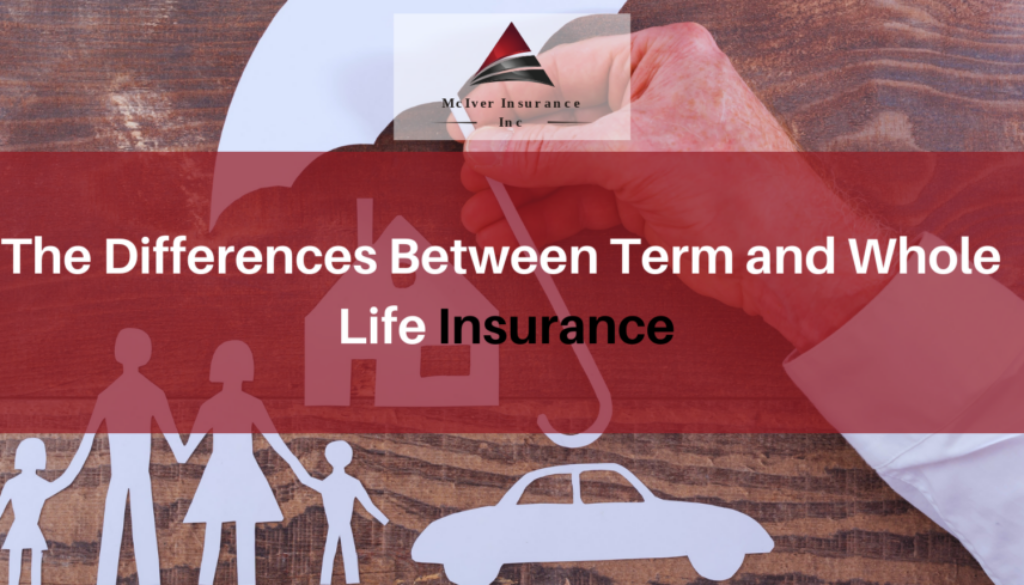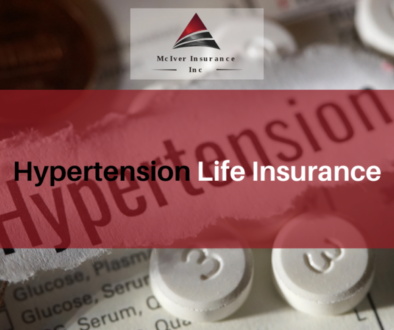The Differences Between Term and Whole Life Insurance
A term life insurance policy and a whole life insurance coverage policy are two of the most common types of life insurance policies. The financial protection offered by life insurance companies can help beneficiaries meet financial obligations such as funeral expenses as well as make the right legal and financial decisions after the death of a loved one.
Life insurance companies have made it increasingly difficult to understand the cost of life insurance, premium payments, and the death benefit a beneficiary might receive. In this article, we present the difference between term life insurance and universal life insurance policies.
Table of Contents
Understanding Term Life Insurance
In the beginning, it is common for a life insurance policy to be a term life policy. A term life insurance policy offers affordable coverage by making premium payments that can be monthly premiums or annual premiums for a predefined period of time known as the ‘term’ of the life insurance policy. Your beneficiaries can collect the death benefit if you die during the period of time the term life insurance policy is active. The life insurance coverage will only be for the validity of the term life insurance policy.
No one can collect any benefits if you are still alive after the term life policies expire. To enjoy a longer coverage period you must either choose life insurance coverage for a longer term from the start, decide to renew your term life insurance after it expires, or converts to permanent coverage at any point during the term duration. Term life policies are a form of risk protection similar to auto insurance policies. You only have insurance coverage and insurance protection as long as the insurance policy is valid.
Advantages of Term Life Insurance
Term insurance policies tend to be cheaper than life insurance policies with lifelong coverage. If your main goal is to acquire affordable coverage as a means of financial protection for your loved ones in the event of your death a term life insurance policy is the way to go. While no two families have the same requirements. It is advisable to purchase a term life policy with a coverage period long enough to get your children to go through college and become earning members of society.
A 30-year-old male can get a 20-year term life insurance policy with a $500,000 payout for just $33.83 per month as quoted by a recognized insurance carrier in Canada. Since women have a longer life expectancy, a 30-year female can get the same policy for just $24.85 per month.
Drawbacks Of Term Life Insurance
Many different factors can influence the exact premium payments that need to be paid out for term life insurance premiums. The monthly premiums will go up significantly if you choose a larger death benefit or longer coverage period. In addition to these factors, a majority of term life policies require individuals to undergo a medical examination. This means that any health complications you may have can increase the total life insurance premiums that need to be paid out.
Another drawback is that term life insurance eventually expires. This means that you have spent all of that money for no other reason other than to achieve peace of mind. Another drawback is that you cannot use those accumulated premium payments to save on taxes or increase your investment opportunities.
Understanding Whole Life Insurance
Whole life insurance or cash value insurance is a kind of permanent life insurance that is distinguished from term life insurance in two ways. First of all, it never expires as it provides lifelong coverage, regardless of how many premium payments you have made. Secondly, it also provides “cash value” in the form of a source of funds other than just the death benefits that will be paid out as compensation. A whole life insurance plan is a customized type of life insurance plan and investment strategy which is why it often costs more.
Advantages Of Whole Life Insurance Plans
A majority of whole life insurance plans are referred to as “premium level” plans because you make the same premium payments as monthly premiums for lifelong coverage or paid-up coverage in a set 10 or 20 year period. Depending on the dividend selected your monthly premium payments are divided into two ways. The first part of your premium payments helps deliver the life insurance coverage. The other part of your premium payments helps build your cash value which can increase over time.
Whole life insurance policyholders will be able to make withdrawals or loans from the cash-value amount of their policy. The cash-value amount of the whole life insurance policy increases on a tax-deferred basis. These funds can be used as financial protection to pay for children’s educational expenses later in life. You can even take out tax-free loans but you will have to pay for income tax on the withdrawals made from the investment gains.
Disadvantages of Whole Life Insurance Plans
Disappointingly, the cash value and the death benefits are not completely unrelated features in the whole life insurance policy. The death benefits will decrease for individuals that take out a loan against their whole life insurance policy. For example, if you take out a $20,000 loan against your policy. Your beneficiaries will get a compensation of $20,000 less plus interest due on that loan if the loan is still pending on the death of the policyholder.
The main drawback of whole life insurance is that it is much more expensive in comparison to a term life insurance policy. Whole life insurance policies can cost anywhere from five to fifteen times more than a term life insurance policy with the same compensation for the beneficiaries. This high cost deters a majority of the life insurance policy buyers from buying whole life insurance plans instead of term life insurance plans. Term life insurance policyholders can simply stop making payments if they no longer want to have life insurance coverage.
Whole life insurance policyholders may have to relinquish ownership of 10% of the cash value of their policy if they no longer want the life insurance coverage. The percentage of surrender charge often decreases as the policy progresses until it no longer exists as the policy ends.
Life Insurance Halifax, Nova Scotia
Are you looking for a reliable life insurance company in Halifax, Nova Scotia? Look no further than the experts at McIver Insurance. With over 30+ years of combined experience, they will help break down the key differences between the type of policy choices available to you. Don’t get overwhelmed by all the nuances of the different life insurance options, let us help you achieve your long-term goals, and set up the best protection for you and your family.



